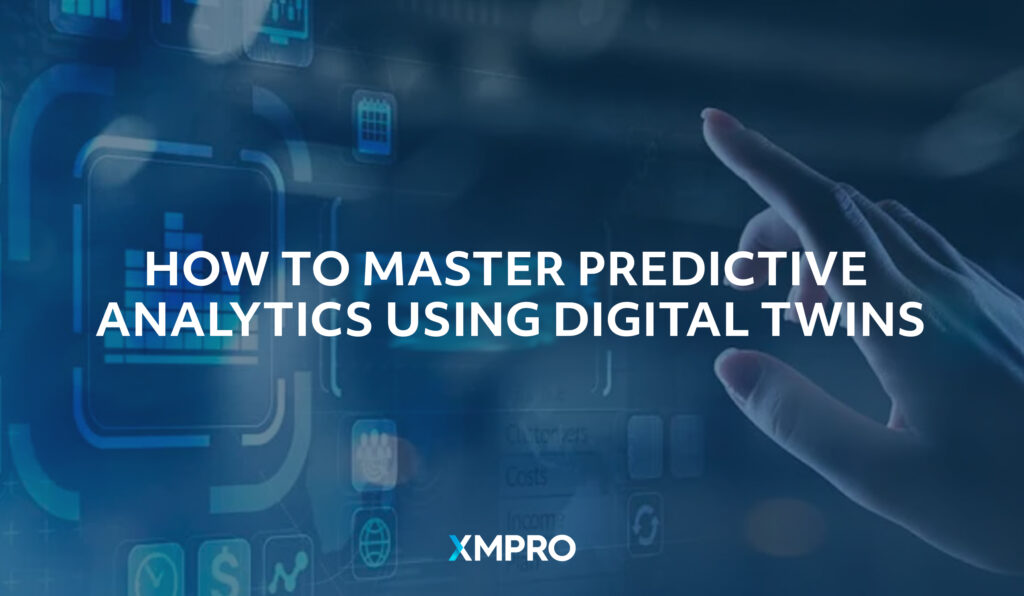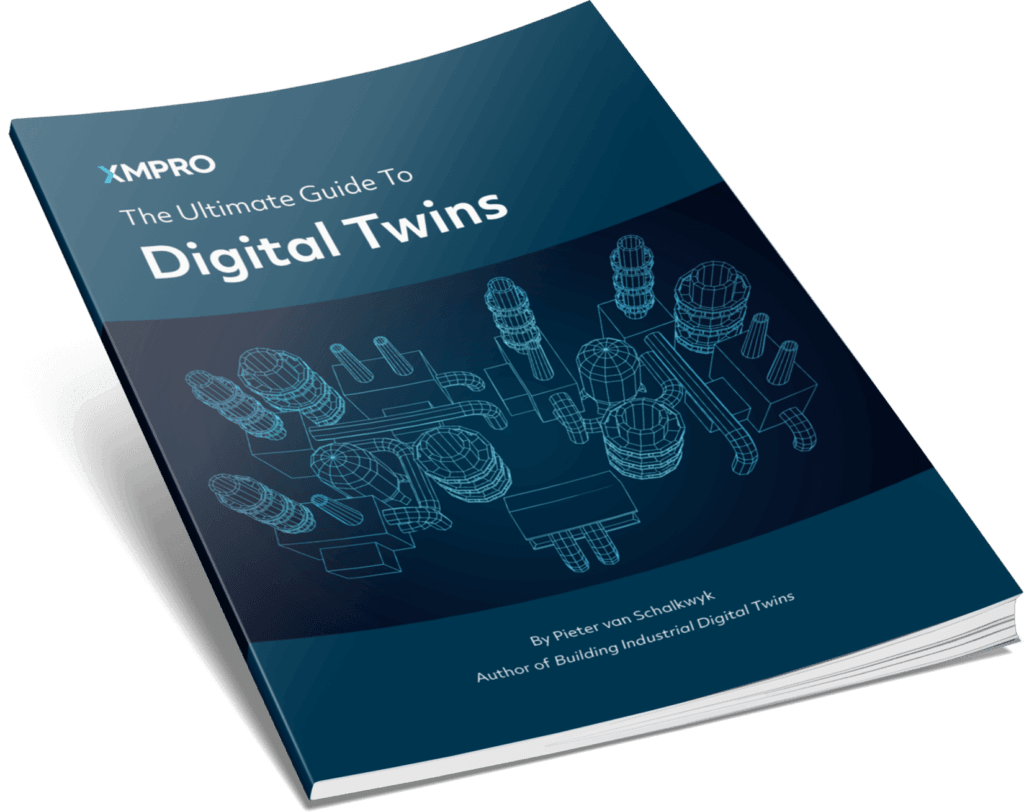
Part 1
Predictive analytics is a powerful tool that can help businesses make more informed decisions and stay ahead of the competition. One of the most promising ways to master predictive analytics is through the use of composable digital twins.
A digital twin is a virtual representation of a physical object or system that can be used to simulate and analyze its behavior. Composable digital twins take this concept a step further by allowing users to create and manipulate multiple digital twins in a single environment. This allows for more complex simulations and more accurate predictions.
To master predictive analytics using composable digital twins, it is important to first understand the basics of how digital twins work. A digital twin is created by collecting data from sensors and other sources, and then using that data to create a model of the physical object or system. This model can then be used to simulate the behavior of the object or system under different conditions, and to make predictions about its future behavior.
One of the key benefits of using composable digital twins for predictive analytics is that they allow for more complex simulations. By combining multiple digital twins in a single environment, users can create simulations that take into account the interactions between different systems and objects. This can lead to more accurate predictions and a better understanding of how the different systems and objects affect each other.
Another benefit of composable digital twins is that they can be used to create a more complete picture of a system or object. By combining data from multiple sources, users can create a more detailed and accurate representation of the object or system. This can lead to more accurate predictions and a better understanding of how the object or system behaves.
In Part 2 of the article, we will discuss the steps required to create and use composable digital twins for predictive analytics. This will include a discussion of the tools and technologies required, as well as best practices for creating and using digital twins.
Part 2
In Part 1 of this article, we discussed the basics of how composable digital twins can be used for predictive analytics and some of their key benefits. In Part 2, we will dive deeper into the steps required to create and use composable digital twins for predictive analytics.
Step 1: Collect Data
The first step in creating a composable digital twin is to collect data from the physical object or system that you want to model. This data can be collected using sensors, cameras, and other devices, and can include information on the object’s or system’s physical characteristics, as well as its behavior and performance. It’s important to ensure that the data collected is accurate and of high quality.
Step 2: Create a Model
Once you have collected the data, the next step is to create a model of the object or system. This can be done using a variety of tools and technologies, such as computer-aided design (CAD) software or simulation software. The model should be as detailed and accurate as possible, taking into account all of the data that has been collected.
Step 3: Combine Digital Twins
Once you have created a model, the next step is to combine it with other digital twins to create a composable digital twin. This can be done using a variety of tools and technologies, such as simulation software or digital twin platforms. It is important to ensure that the digital twins are compatible and can be easily combined to create a single, cohesive simulation.
Step 4: Simulate and Analyze
Once you have created a composable digital twin, the next step is to use it to simulate and analyze the behavior of the physical object or system. This can be done using a variety of tools and technologies, such as simulation software or digital twin platforms. It is important to ensure that the simulations are as accurate as possible and take into account all of the data that has been collected.
Step 5: Make Predictions
Once you have simulated and analyzed the behavior of the physical object or system, the next step is to make predictions about its future behavior. This can be done using a variety of tools and technologies, such as machine learning algorithms or artificial intelligence. It is important to ensure that the predictions are as accurate as possible and take into account all of the data that has been collected.
In conclusion, mastering predictive analytics using composable digital twins can be a powerful tool for businesses to make more informed decisions and stay ahead of the competition. By following these steps, it is possible to create and use composable digital twins that provide accurate and detailed simulations and predictions. It’s important to remember that the process of creating and using composable digital twins is an ongoing process and requires regular updates and maintenance.
Part 3
In Part 1 and 2 of this article, we discussed the basics of how composable digital twins can be used for predictive analytics, the steps required to create and use them, and some of their key benefits. In Part 3, we will discuss some best practices for creating and using composable digital twins for predictive analytics.
Best Practice 1: Keep it Simple
When creating a composable digital twin, it’s important to keep the model as simple as possible while still being accurate. A complex model with too many variables can be difficult to understand and can lead to inaccurate predictions. By keeping the model simple, you can ensure that it is easy to understand and can be used to make accurate predictions.
Best Practice 2: Use Real-World Data
When collecting data for a composable digital twin, it’s important to use real-world data that is representative of the physical object or system being modeled. This will ensure that the digital twin is an accurate representation of the physical object or system, and that predictions made using the twin will be as accurate as possible.
Best Practice 3: Continuously Monitor and Update
A composable digital twin is not a one-time creation, it’s an ongoing process that requires regular monitoring and updating. As new data becomes available, or as the physical object or system changes, it’s important to update the digital twin accordingly. This will ensure that the twin remains an accurate representation of the physical object or system, and that predictions made using the twin will continue to be accurate.
Best Practice 4: Collaboration and communication
Creating a composable digital twin involves different teams and departments, it’s important to have a clear communication and collaboration process in place. This includes regular meetings and updates, as well as a shared platform where everyone can access and update the digital twin. This will ensure that everyone is aware of the progress and can contribute to the creation and maintenance of the digital twin.
In conclusion, mastering predictive analytics using composable digital twins can be a powerful tool for businesses to make more informed decisions and stay ahead of the competition. By following best practices such as keeping the model simple, using real-world data, continuously monitoring and updating, and collaborating and communicating effectively, it’s possible to create and use composable digital twins that provide accurate and detailed simulations and predictions.
Part 4
In Part 1, 2 and 3 of this article, we discussed the basics of how composable digital twins can be used for predictive analytics, the steps required to create and use them, best practices and some of their key benefits. In Part 4, we will discuss some of the potential applications and real-world use cases of composable digital twins in predictive analytics.
- Predictive Maintenance: By using composable digital twins, businesses can create detailed simulations of their equipment and systems, and use them to predict when maintenance is needed. This can help businesses to reduce downtime and improve the efficiency of their operations.
- Supply Chain Optimization: Composable digital twins can be used to create simulations of entire supply chains, including logistics and transportation networks. These simulations can be used to predict bottlenecks and inefficiencies, and to optimize the flow of goods and materials.
- Predictive Quality Control: Composable digital twins can be used to create simulations of manufacturing processes, and to predict the quality of the final products. This can help businesses to improve the quality of their products, and to identify and correct problems before they occur.
- Predictive Energy Management: Composable digital twins can be used to create simulations of energy systems, such as power grids and renewable energy sources. These simulations can be used to predict energy usage and to optimize the use of energy resources.
- Predictive Environmental Impact: Composable digital twins can be used to create simulations of environmental systems, such as ecosystems and weather patterns. These simulations can be used to predict the impact of human activities on the environment, and to identify potential problems before they occur.
CONCLUSION
In this article, we have explored how composable digital twins can be used for predictive analytics, the steps required to create and use them, best practices and some of their key benefits and real-world use cases. By creating detailed simulations of equipment and systems and using them to predict when maintenance is needed, optimize their supply chain, improve the quality of their products, manage energy resources, and predict the environmental impact of their operations, businesses can improve the efficiency of their operations, reduce downtime and stay ahead of the competition.
One way to take the next step in utilizing the power of composable digital twins for predictive analytics is by using a platform such as XMPro. XMPro is an industrial IoT platform that allows businesses to create, manage and analyze digital twins, automate workflows and optimize their operations. It also provides a collaborative environment for different teams and departments to work together and share information. By using XMPro, businesses can easily create, manage and analyze composable digital twins for predictive analytics and gain a competitive advantage.
















